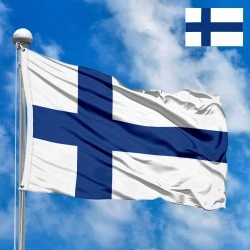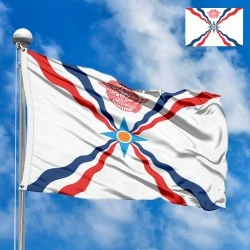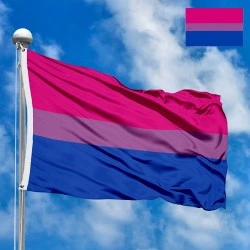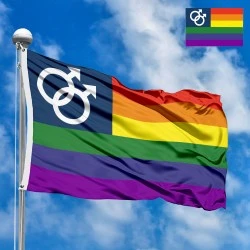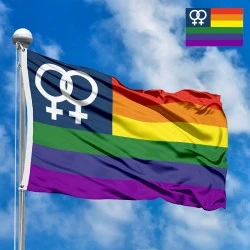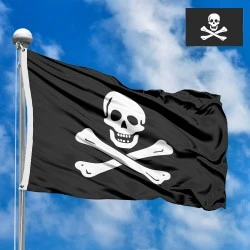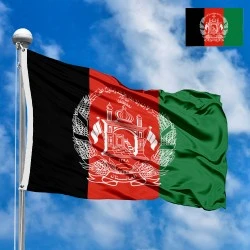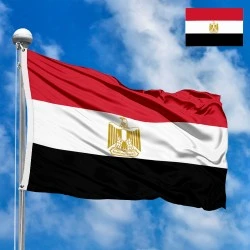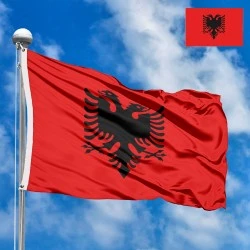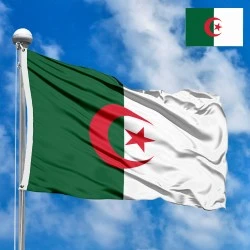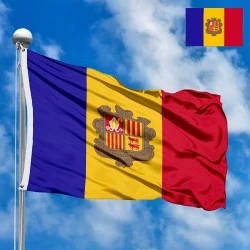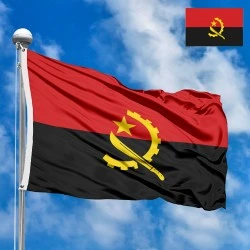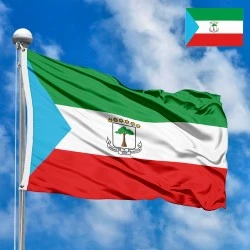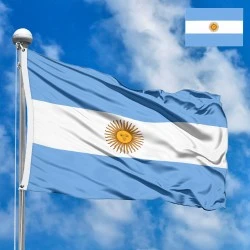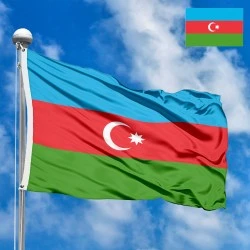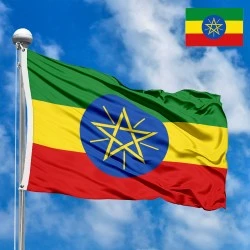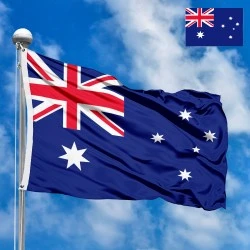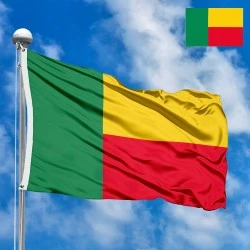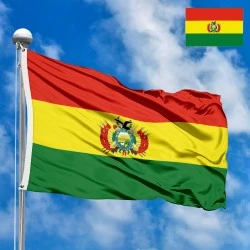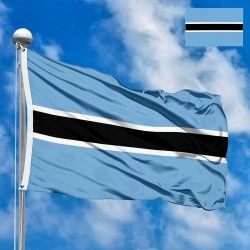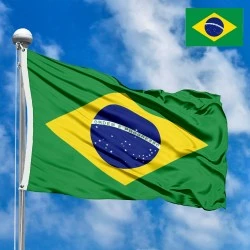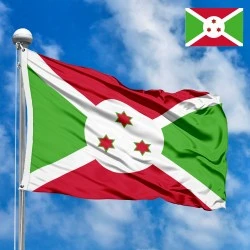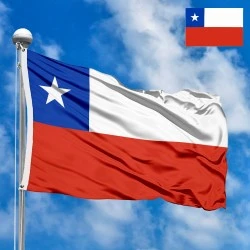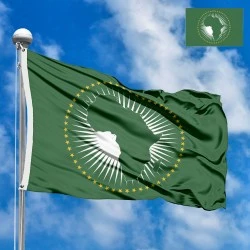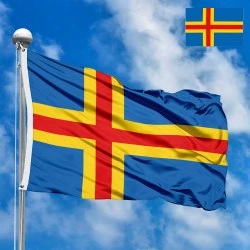Flag of the Aland Islands
- Flag Type: Regional
- Proportions (official): 17:26
- Official name: Åland Islands
- Local name: Åland
- Sovereignty (year): NO (Autonomous province of Finland since 1921)
- Member of Organizations: Nordic Council
- Country code, territory: AX, ALA, 248
- Capital: Mariehamn
- Population: 30,500 (2024, ÅSUB)
- Religions: Lutheranism ~80%, other/none ~20%
- Area (km²): 1 580
- Highest point: Orrdalsklint (129 m)
- Lowest point: Baltic Sea (0 m)
- Currency: Euro (EUR, €)
- Languages: Swedish
- Dialing code: +358
- National domain: .ax
Flag Information
General information
Demography and Culture
Economy and communications
- All Flags
- Flags of Countries by Continent
-
Flags of Organizations
- Flags of UN countries
- Flags of the European Union countries
- Flags of NATO countries
- Flags of the countries of the Organization of Islamic Cooperation
- Flags of the countries of the Organization of American States
- Flags of the Arab League countries
- Flags of the African Union countries
- Flags of the countries of the Union of South American Nations
- Flags of the Commonwealth of Nations
- Flags of the countries of the Secretariat of the Pacific Community
- Flags of the Nordic Council countries
- Flags of the Caribbean Community
- Flags of the countries of the Association of Southeast Asian Nations
- Flags of the East African Community
- Flags of the countries of the Organization of Turkic States
- LGBT Community Flags
- Historical Flags
- Ethnic Flags
- Flags of the USA (states)
Description
The flag of the Åland Islands features a blue field with a yellow Scandinavian cross. Inside this yellow cross is a smaller red cross. The official dimensions of the flag are established: its height-to-length ratio is 17:26. The width of the blue fields at the corners of the flag is 6 units, the width of the yellow cross is 5 units, and the width of the red cross inside the yellow is 3 units. Thus, the color proportions are as follows: 6 blue, 3 yellow, 3 red, 3 yellow, 6 blue horizontally, and 6 blue, 3 yellow, 3 red, 3 yellow, 6 blue vertically. These precise proportions ensure a clear and recognizable image.
The colors of the flag were not chosen randomly:
-
Blue and Yellow are the main colors of the Swedish flag, symbolizing the Swedish cultural and linguistic heritage of the Åland Islands, as well as their historical belonging to Sweden until 1809.
-
The Red cross, placed within the yellow one, in combination with yellow and blue, refers to the colors of the Finnish coat of arms – a golden lion on a red field – and also to the colors of the modern Finnish flag (blue and white, but red has historically been associated with Finnish symbolism). This indicates the current status of the Åland Islands as an autonomous part of Finland.
The combination of these colors and the Scandinavian cross creates a unique visual language that simultaneously emphasizes both Swedish roots and Finnish affiliation, while also demonstrating a distinct, separate identity.
History of the Flag's Creation
The history of the creation of the Åland Islands flag is closely linked to the development of their autonomy and the pursuit of self-determination after the collapse of the Russian Empire and Finland's independence in 1917. During that period, a strong movement for reunification with Sweden emerged in Åland, but the League of Nations ruled in 1921 that Åland would remain part of Finland, but would receive broad autonomy and guarantees for the preservation of the Swedish language and culture.
Shortly after this decision, the need for a distinct flag arose to symbolize this special status. Initially, from 1922 to 1954, an unofficial flag consisting of three horizontal stripes – blue, yellow, and blue – was used in the Åland Islands. These were the colors of the old Åland coat of arms, which depicted a deer on a blue field with two yellow stripes. However, this flag was never officially recognized.
In the early 1950s, the issue of adopting an official flag for the Åland Islands became pressing. A competition was announced, and among many proposals, the idea that formed the basis of the modern flag won. The design was developed by a group of artists and vexillologists, and on July 3, 1954, the Åland Parliament (Lagting) passed the Flag Act, which came into force on November 28 of the same year.
The choice of the Scandinavian cross was obvious, as it is a common symbol for most Nordic countries. The addition of a red cross over the yellow was proposed to create a unique design that would differentiate the Åland flag from those of Sweden, Finland, Norway, Denmark, and Iceland, and also incorporate a Finnish element into the symbolism. This decision allowed the flag to express both Swedish heritage and Finnish sovereignty, while also emphasizing the archipelago's unique autonomous position.
Countries and Regions
The Åland Islands are an archipelago located in the Baltic Sea, halfway between Sweden and Finland. They are an autonomous, demilitarized, and unilingually Swedish province of Finland. Although Åland is part of Finland, it enjoys a significant degree of self-governance.
This self-governance includes:
-
Its own Parliament (Lagting), which has legislative powers in areas such as education, culture, healthcare, police, postal services, customs, and economic development.
-
The right to enact its own laws within its jurisdiction.
-
Its own public institutions, including police and postal services, with their own coats of arms and uniforms.
-
The right to have its own flag.
-
Separate membership in the Nordic Council, which underscores its special connection to the Nordic countries.
Geographically, Åland is located in the Gulf of Bothnia, west of mainland Finland. Its population primarily speaks Swedish, and its culture is closely tied to Swedish-speaking Scandinavia.
Interesting Facts
-
Unique Status: The Åland Islands are the only region in Finland that is officially unilingually Swedish. This is enshrined in the Åland Autonomy Act.
-
Demilitarization: Åland is fully demilitarized under international treaties, beginning with the Treaty of Paris in 1856 after the Crimean War and reaffirmed by the Åland Convention of 1921. This means that no military forces or fortifications can be stationed on the islands, and their citizens are exempt from military service.
-
Sole Official Language: Swedish is the sole official language of the Åland Islands. This is of immense importance for preserving their cultural identity.
-
Own Postal Stamps: The Åland Islands have issued their own postal stamps since 1984, which are a popular collector's item and another symbol of their autonomy.
-
Political History: The question of Åland's belonging was one of the first international disputes successfully resolved by the League of Nations, the predecessor of the UN. This set a precedent for the peaceful settlement of territorial disputes.
-
Maritime Heritage: Åland has a rich maritime heritage. At one time, the city of Mariehamn was one of the last global centers for large sailing ships.
Adoption and Significance for Inhabitants
The adoption of the Åland Islands flag in 1954 was a significant event for the archipelago's inhabitants. It was an act of self-determination and a visual confirmation of their unique autonomous status within Finland. The flag quickly became a powerful symbol of unity, identity, and pride in their home.
For Ålanders, the flag signifies:
-
Autonomy: It symbolizes their right to self-governance, the ability to enact their own laws, and to preserve their way of life.
-
Cultural Identity: The colors and design of the flag reflect their Swedish linguistic and cultural heritage, which is carefully safeguarded. This is particularly important given their position within the Finnish state.
-
Historical Continuity: The flag recalls the archipelago's long history, its ties to Sweden and Finland, and its journey to obtaining special status.
-
Peace and Demilitarization: In the context of its demilitarized status, the flag also carries a message of peace and neutrality, which is an important part of Ålandic identity.
-
Cohesion: The flag is a rallying point for Ålanders, a symbol of their shared destiny and their commitment to preserving their unique community.
The flag of the Åland Islands is not just an official symbol; it lives in the daily lives of the islanders, flown on public buildings, private homes, ships, and used during celebrations. It serves as a constant reminder that Åland is not merely a region of Finland, but a unique self-governing territory with its own path and aspirations, united under a banner that reflects their past, present, and future.
In the demonstration images, full-size flags are shown with proportions of 2:3, and hand-held flags with proportions of 1:2.
Donation
Download
Completely free for commercial and non-commercial use (public domain).
You can freely use them in your news magazines, websites, software, mobile applications.
We appreciate a backlink to https://flagssite.com
Raster files - Flag of the Aland Islands (PNG, JPG)
 Waving flag
Waving flag
- PNG format (transparent background), 72dpi, dimensions in Pixels (px), aspect ratio 3:4.
- 15х20 px
- 30х40 px
- 60х80 px
- 120x160 px
- 240x320 px
 Sizes:
Sizes:
"v15" - image size (by height); if necessary, replace with available: v15, v30, v60, v120, v240.
!!! For resizing, use the Latin (eng) keyboard layout.
<img src="https://flagssite.com/flags/v15/20262.png" alt="Flag of the Aland Islands">
 Round flag
Round flag
- PNG format (transparent background), 72dpi, dimensions in Pixels (px), aspect ratio 1:1.
"d15" - image size (diameter); if necessary, replace with available: d15, d30, d60, d120, d240.
!!! For resizing, use the Latin (eng) keyboard layout.
<img src="https://flagssite.com/flags/d15/20262.png" alt="Flag of the Aland Islands">
 Rectangular flag 2:3
Rectangular flag 2:3
- JPG format, 72dpi, dimensions in Pixels (px), aspect ratio 2:3.
"h30" - image size (by height); if necessary, replace with available: h15, h30, h60, h120, h240, h360, h480.
!!! For resizing, use the Latin (eng) keyboard layout.
<img src="https://flagssite.com/flags/h30/20262.jpg" alt="Flag of the Aland Islands">


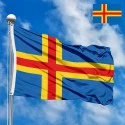
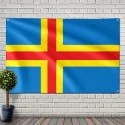
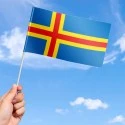


 Sizes:
Sizes:
 Sizes:
Sizes:
